Lemay/Atelier 21
This award is to recognize excellence in architectural innovation, including the research and development and the applied use of new technology; unique adaptation of existing technology; new project delivery methods; new design processes; new details; or the development of new methods related to the construction process.
Innovations cover a wider range of architectural endeavors including, but not limited to Management, Project Delivery, Energy, or Building Envelope. The award is intended to recognize skill and innovation in technology, project delivery, building science, practice of architecture and social innovation.
By adding a transparent, immaterial and structural layer to the original Grand Théâtre de Québec, Lemay / Atelier 21’s innovative envelope refurbishment solution protects and preserves the building’s two distinguishing components: its brutalist architecture by Victor Prus and integrated sculptural mural by artist Jordi Bonet.
The theatre is a cultural icon with its modernist architecture, defined inside and out by prefabricated concrete panels, and its monumental sculpted work that covers nearly 60% of its interior walls.
At the time of our involvement, moisture had caused the concrete panels’ steel anchors to disintegrate. Any alteration had to be severely limited: the building’s fragility, and the inability to directly access the steel anchors, were additional challenges. Moreover, the project had to stay open, with work on the building proceeding during daytime and evening theatre operations. Construction noise could not escape during shows or rehearsals; architectural and technical solutions could not hinder building access. In addition, as the mural was connected to the exterior concrete panels, any operation had to have zero impact and vibration on the envelope. Coordination with several levels of decision-makers was essential. Weather conditions were also a major challenge: installation of the new envelope was only possible under specific climatic conditions. Finally, because the glass needed to be attached to a steel structure, the steel could not be exposed to any significant temperature variation from the moment of its adjustment to the installation of the glass.
Through architecture, we preserve our environment by protecting our heritage through a sensitive and poetic gesture, a meticulous and delicate installation that is above all, adapted to its context. This is what drives us to invent new solutions, to push the limits and act frugally, just like in here, with the Grand Théâtre de Québec.
It is a great honour for our entire team to receive this award. Our work on the Grand Théâtre de Québec was a wonderful opportunity for everyone to reflect on the richness of our modern heritage and its preservation. The project was developed with humility—a humility respectful of the work of Victor Pruss and Jordi Bonet who deserved a rescue operation worthy of their masterpieces— but above all with an extraordinary passion bringing together contractors, manufacturers, clients, artists, engineers and architects.
Transforming an existing building is a complex undertaking, and our modern heritage requires a great deal of thought on the strategies we need to put in place to preserve it; failing to do so will lead to the loss of marvellous works. In the case of the Grand Théâtre, both Victor Pruss's work and Jordi Bonet's masterful art led us to a unique solution that is both simple and complex. The glass casing is a final act, which, depending on the time of day, takes on a different physicality that can alter how we see the structure. The project was developed with great respect for our predecessors, but also thanks to the contributions of all the stakeholders involved.
Architecture has always been a reflection of its time. The Grand Théâtre, designed by Victor Pruss and inaugurated 50 years ago, is a wonderful example of this, especially with its imposing interior mural by Jordi Bonet. The project required a global mastery of each of the disciplines as well as humility in the face of this concrete giant to ensure that we intervened in a respectful way, preserving the whole while bringing it into the present.
The addition of see-through glass casing to protect the Grand Théâtre is the final act of a play completing the preservation of Victor Pruss’s modern work. As a result, the main stage and the lobby housing Jordi Bonet's masterful mural are now joined by this glass casing. The new protective envelope comes to life depending on the time of day, sometimes reflecting, sometimes completely invisible, imbued by the city around it.
The construction systems were almost all custom-designed. The delicate steel structure, on which the glass rests, is the result of intense and sustained teamwork among architects, engineers, construction specialists and manufacturers, who designed a revolutionary structure while respecting the project’s budget. This involved creating custom prefabricated fasteners to maintain the transparent aspect of the new protective layer and minimize the visual impact of the aluminum plates supporting the glass. In-depth thinking was necessary to meet structural, climatic, heritage and implementation requirements. The construction system also had to allow for maintenance via a suspended platform inserted between the existing building and the new envelope.
The solution shields the theatre from the elements by creating a secondary, tempered envelope housing a low-flow heat recovery and thermal mass system, which is both energy-efficient and economical. The new layer now acts as an extension of the original building it protects, using the same finely tuned structural logic and composition.
This rescue operation has maintained the continuity of the original design storyline, now featuring a thin wall of immaterial, protective glass. The glass casing is a delicate response to a complex problem. Amplifying the original building morphology, it revolves at the corners; it lifts at the base; it fades; ultimately leaving the building intact and perfectly visible. It can appear solid or immaterial, depending on the light, blurring the boundaries of the building. The brutalist lines and artistic narrative are even more striking thanks to this subtle, functional and ecologically viable solution.




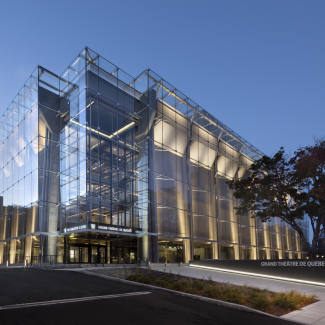
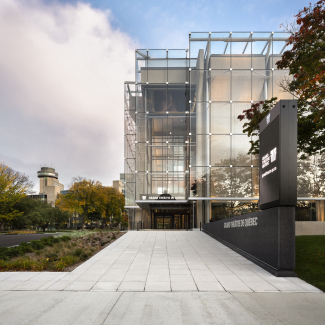
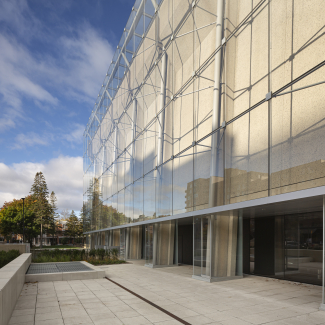
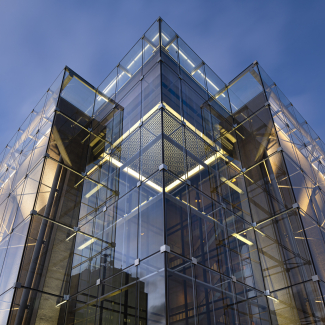
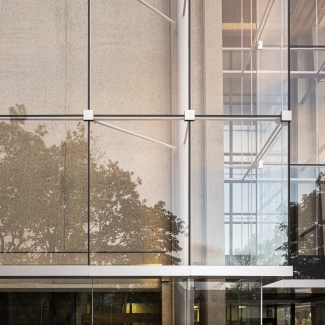
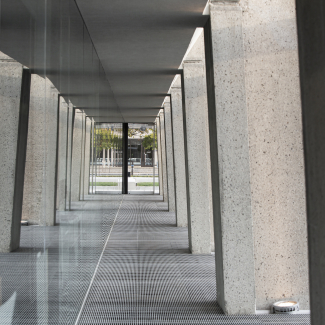
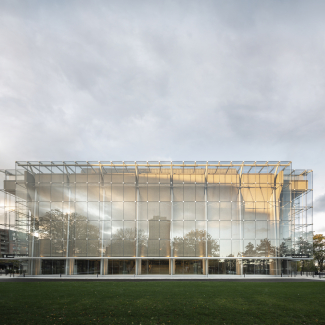

The Grand Théâtre de Québec demonstrates a host of notable innovations in the spirit of honouring the original Victor Prus building and sensitively protecting the existing degrading structure and Jordi Bonet mural. The new glass casing is quiet and understated, with a technical rigour that speaks to what must have been remarkable teamwork between the architects, engineers, and manufacturers. It skillfully addresses the challenges faced by the concrete façades and unique interior sculptural murals by developing from the exterior a meticulous envelope system and creating an in-between controlled environment. The team's choices throughout the process demonstrate how intelligent, quiet innovations can significantly extend the life of public buildings for the betterment of the community, climate, and environment.
Jury members:
Pat Hanson, FRAIC
Principal and founding partner of gh3*
Toronto, ON
Michael Green, FRAIC
Principal, MGA | MICHAEL GREEN ARCHITECTURE A Katerra Design Partner
Vancouver, BC
Leila Farah, PhD, Associate Professor
Department of Architectural Science, Faculty of Engineering and Architectural Science at Ryerson University
Toronto, ON
International Newswire Partner
